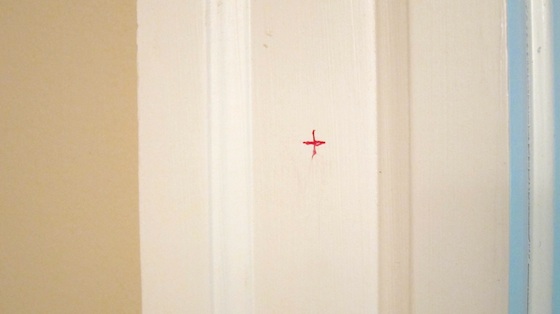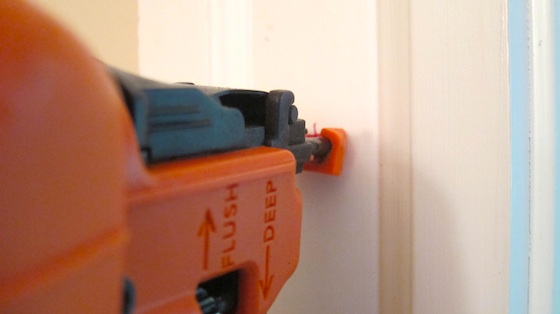Milwaukee 18 Gauge Brad Nailer Review
I'm going to preface this tool review with a couple of comments.
First and foremost, Milwaukee has a deep legacy of making superb power tools. I've used them for decades.
I'm fortunate to be a member of the working press and have been invited to quite a few Milwaukee Tool media events in the past few years. I've watched with fascination over this short time as they've decided to leave their decades-old comfort zone and expand from their traditional plumbers and electricians tool lines into the other trades including one dear to my heart - carpentry.
As you might expect, you could stumble if you decide to make tools for one trade that you've never made before. Unfortunately, this is the case with the new Milwaukee 18-gauge brad nailer 2740-21CT.
As a master carpenter for the past thirty years, I can tell you unequivocally this electric-powered nailer is just not ready for prime time. Just like the first version of many different computer software V 1.0 products can be full of bugs, so too the first version of this 18-gauge power tool.
Truth About Tool Reviews
I've used all the different nail guns for decades. My guess is I've driven well over 100,000 nails with nail guns based on the number of large boxes of nails I've purchased!
What's more, I'm in a very small minority. I'm one of the few people in the media that's got decades of real power tool experience. For over twenty years I had to use power tools six days of the week to make a living working in and on the homes of paying customers. In my opinion, that's how you measure a true professional - one who's had to make a living getting paid to do something.
WARNING: Many of the other people out there reviewing tools don't have this experience. In fact, many of them are hobby bloggers that have their tool review websites as a pastime. Many of these reviewers get a power tool from a manufacturer and within hours or a few days they have a review posted with great photos of the tool. They've not put the tool to the test on a real job site for weeks at a time.
You can easily check to see if a tool review website is worthy of your attention. Just go to the About Us page at the tool review site you're on and look for a photo of the person writing the reviews.
The next step is to read their bios to see how many years they worked as a carpenter, plumber, electrician, remodeler, etc. If they can't prove to you that they use, or have may years of using, power tools in the homes of paying customers, I maintain their review may not be worthy of your attention.
When I get a tool to review I actually use it. I put it through all the steps one might in the real world. This extra work pays off because you may be one like Ehren Q. below who left a comment about this review. Here's what he had to say:
"I've just broke mine from the box this week. Ive been punching about 5/6 nails. You were spot on by saying the area of vision was poor as well. Sure there is a light that is convenient, but it lights up a large metal tip.
I greatly appreciate your honest review as every other review I've read is saying this is a FANTASTIC tool, it's not. If I had the ability to return it I would."
My Nail Gun History
I clearly remember purchasing my first Senco pneumatic framing nailer years ago. It didn't take long for me to acquire many different nailers for both rough and finish work because these tools are such time savers and they can drive nails better than you can with a hammer. What's more, many of the nails have an adhesive on them and they hold better than a hand-driven nail.
A few years down the road in the late 1980's I made the transition from pneumatic nail guns to Paslode nailers that were powered by a tiny internal combustion engine. There was no need for a heavy, noisy compressor and gangly air hoses that were constant trip hazards and often got covered with mud. From the time you took a Paslode nail gun from its case, you'd be firing it in about ten seconds or less.
Milwaukee got this part of the tool right, in fact they improved upon it because their new 18-gauge nailer only requires electricity to operate where the Paslode tools I used for decades, and continue to use, require electricity and small cartridges filled with propane. But I digress.
Hitting the Target
What you discover very quickly when using a nail gun is that it's vitally important for you to know exactly where the nail is going to go.
When you nail by hand, unless your eyesight is poor, your one hand places the point of the nail precisely where you want to drive it. Assuming you strike the nail squarely with a hammer and your other hand helps to hold the nail in place, the nail will go exactly where it needs to go.
With a nail gun, you must have a design that allows you to see the target area exactly where the point of the nail will go once you pull the trigger.
When driving nails into rough lumber, you can afford to be off say 3/8 of an inch. When you drive a standard 16-gauge finish nail, you can maybe afford to be off target about 1/8 inch.
However, when you drive a tiny 18-gauge brad nail, that margin for error drops to about 1/16th inch because your dealing with small trim wood such as the outside corners of crown molding or some other secondary trim lumber molding.
If you can't see where the nail is going to go, you could ruin a cabinet, an expensive piece of trim, etc. with just one squeeze of the trigger.
Firing Blind
The first thing I did when I opened this new Milwaukee 18-gauge brand nailer was hold it up to a 2x3 shelf support that's above one of my work benches. I wanted to see two things - how it felt and how well I could see where it was going to nail.
I was astonished by two things.
First, the tool is heavy - noticeably heavier than my Paslode 18-gauge brad nailer.
Second, I couldn't see where the nail was going to go. The entire tip of the tool was bulbous black and created a dark space where who knows where the nail would go.
It's best illustrated by photos. Here are two photos taken at the same angle while holding both tools as you would just before activating the trigger to fire the nail.
I attempted to take the photos in such a way as to represent exactly what I see with my eye as I look at the tool while using it. I did this using a stationary tripod to hold the camera and I placed the tools in the exact same spot over the tiny red cross that was my visual target.

This is a piece of interior door casing in my home. I made a red cross with a fine permanent marker. The lines are about 3/8-inch long in each direction. This is the target area the nail needs to hit. Photo credit: Tim Carter
Keep in mind that when you use a brad nailer that your margin of error is small. Much smaller than the target above.

This is the gold standard brad nailer in my opinion. It's the Paslode 18-gauge brand nailer. Had I pulled the trigger the nail would absolutely hit the center of the target. You can see the horizontal red line and the top half of the vertical line. The orange protective nosing on the tool has sight lines you line up so the nail goes exactly where you want it. Photo credit: Tim Carter

Here is the Milwaukee 18-gauge brad nailer. You can't even see the target. It's somewhere under all that metal that forms the nose of the gun. The tool was aligned exactly as the Paslode gun was in the above photo. You have no idea if the nail will go where you want it to go. Photo credit: Tim Carter

Here's how I took the above photos. The camera was locked in position in all directions and could not move. The only thing that could move was the nail gun. Photo credit: Tim Carter
Tool Weight:
The two tools are not even in the same ballpark when it comes to weight.
Paslode says their tool weighs 4.9 pounds. My postal scale agrees with that with it coming in, including battery and propane cylinder at 4 pounds 14 ounces.
The Milwaukee 18-gauge brand nailer tips the scales at a beefy 6 pounds 13 ounces. Two pounds makes an enormous difference.
Number of Nails per Charge
Milwaukee says their tool will drive 1,200 nails if the battery is fully charged. I'll take their word for it as I'm not about to waste those many nails, since none came with the tool, and I don't have that kind of time.
Paslode says their tool will drive 12,000 nails per charge of their lithium-ion battery. Granted, the small propane cartridges will need to be changed out, but that takes about 30 seconds. If you don't have a spare Milwaukee battery, you're going to be taking one long 30-minute coffee break as you wait for their battery to get topped off.
Nails
I was very disappointed that the Milwaukee nail gun didn't come with one or two starter strips of nails. How frustrating if you purchase this as a gift for someone, they open it and they can't use it right away. Come on Milwaukee, the nails would cost you maybe a dime.
SUMMARY:
I don't particularly like writing reviews like this, but I feel it's really important for you and Milwaukee. You need to know that there are vast differences in tools that do the same job.
Milwaukee hopefully will take away from this that they should talk to seasoned pros who can tell them the best features of existing tools and the deal breakers that must be avoided when designing a tool from scratch.
Had they hired me many months ago when they were in the initial stages of designing this tool, I would have brought my Paslode gun to the meeting and drawn a few red crosses on a piece of woodwork and said, "Here, line up the cross with these marks on the orange rubber pad. When you think you have it, press the tool to the wood and pull the trigger."
I can tell you for a fact the product manager at Milwaukee would have put his first Paslode nail within 1/16th inch of the center of the red cross.
I would have then said, "Make sure you have that same visibility with your tool." Period
Mentioned in the May 15, 2016 AsktheBuilder Newsletter.
10 Responses to Milwaukee 18 Gauge Brad Nailer Review